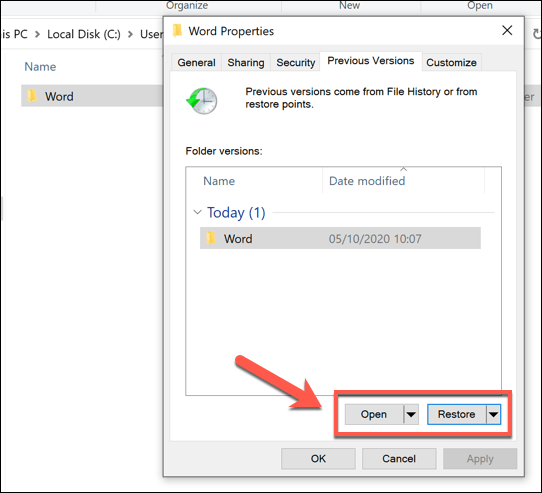

The update system has been smooth and trouble-free for almost everyone.

In the six months since Windows 10 was released, there have been the typical security updates and bug fixes, there have been several “cumulative updates” that include many different fixes in one package, and in November there was a major refresh of the entire operating system that added new features. Microsoft has removed many options to delay or avoid updates as a way to ensure that all computers are continually protected and up to date. Windows 10 requires timely installation of updates. If you use System Restore to restore the computer to its condition three days ago, you will not lose three days of files or email. Again, to be clear, System Restore does not touch your data.

If the changes cause problems for your computer – anything from distorted colors to being completely unable to start – System Restore allows the computer to be rolled back to its previous condition.

It takes snapshots automatically before certain kinds of changes: before updates are installed to Windows before some drivers are installed (an update for the video card, say) and before some software updates. System Restore backs up files related to running Windows – registry files, drive and boot configurations, and hardware drivers. You still need to turn on File History or do cloud backups or whatever your choice is to back up your files. Your stuff will not be better protected after you turn it on. It does not back up your files or pictures. System Restore has absolutely nothing to do with your data. System Restore will now function completely automatically.įirst let’s make sure you understand what it’s not. Move the bullet to “Turn on system protection.” Set Disk Space Usage to 10Gb. If it says “Protection: Off”, then highlight the C: drive and click the Configure button. If it says “Protection: On”, like the above screenshot, then you’re done. It only needs to be turned on for the drive where Windows is installed, usually the C: drive. System Restore is set up separately for each drive. (Alternative: open Control Panel and click on System & Security / System / System Protection.) Type in Create a restore point and click on it when it appears on the menu. How to enable System Restore on Windows 10Ĭlick on Start. Why did Microsoft disable System Restore?.How to enable System Restore on Windows 10.Let’s do the useful part first, then go through some background. If you are technically savvy or have complicated computer setups, I encourage you to do more research and draw your own conclusions.) (As always, this advice is for normal non-technical individuals and small business users. If you’re running Windows 10, I want you to go turn it on if it is disabled on your computer. It’s not used often but it’s absolutely crucial when you need it. System Restore is turned off by default in Windows 10.


 0 kommentar(er)
0 kommentar(er)
